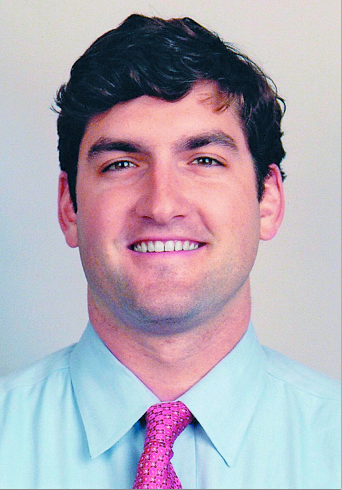- Case-Based Roundtable
- General Dermatology
- Eczema
- Chronic Hand Eczema
- Alopecia
- Aesthetics
- Vitiligo
- COVID-19
- Actinic Keratosis
- Precision Medicine and Biologics
- Rare Disease
- Wound Care
- Rosacea
- Psoriasis
- Psoriatic Arthritis
- Atopic Dermatitis
- Melasma
- NP and PA
- Skin Cancer
- Hidradenitis Suppurativa
- Drug Watch
- Pigmentary Disorders
- Acne
- Pediatric Dermatology
- Practice Management
- Prurigo Nodularis
- Buy-and-Bill
Article
3 fast marketing tactics for lasers
Marketing is what fuels the success of laser practices, says Michael H. Gold, M.D., medical director of a Nashville, Tenn. laser practice with more than 40 devices.
Marketing is what fuels the success of laser practices, says Michael H. Gold, M.D., medical director of a Nashville, Tenn. laser practice with more than 40 devices.
But, like anything else, marketing has to be done strategically. The goal is to keep business coming in the door without breaking the bank.
1. Start with those you know

Michael H. Gold, M.D.Marketing your laser practice should first focus internally-on your staff and patients. The often more expensive external marketing comes later, experts say.
Marketing to patients and staff is a more intimate, grassroots approach, which might include staff training, patient communications and social media.
Terrence Keaney, M.D., clinical professor of dermatology and urology at George Washington University Medical Center and director of W for Men, the men’s cosmetic center at the Washington Institute of Dermatologic Laser Surgery, says patients and staff should know all the procedures available at your practice.
READ: Experts' top device picks

Terrence Keaney, M.D.“Our staff members know exactly what our treatments entail and the results that can be expected. They can be a great advocate for these procedures to your existing patients. I think the best bang for your buck is maximizing your internal marketing,” Dr. Keaney says.
Use different channels to communicate the message about your new technology to patients, according to dermatologist Bruce Katz, M.D., who directs the Cosmetic Surgery and Laser Clinic at Mount Sinai Medical Center, as well as his own Juva Skin and Laser Center in Midtown Manhattan.
“I’ll do an email blast, e-newsletters. We have a TV monitor in the waiting room with different types of lasers that we’re using for different conditions,” Dr. Katz says “Certainly, put information about any new devices on your Facebook page, on social media.”
Laser companies often develop consumer-friendly collateral, including in-office brochures. Dermatologists can use those in their waiting rooms, or create their own.
Dr. Gold, who directs Gold Skin Care Center and Tennessee Clinical Research Center, Nashville, says his strategy is not only to inform but also to entice patients. His website focuses on his laser expertise and promotes the practice’s successful VIP loyalty rewards program.

Elizabeth L. Tanzi, M.D.Why focus so much on patients? The dermatologist’s patient base is a rich referral and business resource, according to Elizabeth L. Tanzi, M.D., clinical professor of dermatology at George Washington University Medical Center and co-director, Washington Institute of Dermatologic Laser Surgery, Washington, DC.
READ: Laser tattoo removal: rethinking ink
“Rather than spend a lot of money on radio advertisements and all of these different things, go to your patients, first,” Dr. Tanzi says. “They want to know that you are now providing these new services to them, and they don’t have to go to another physician to get them.”
Being active on social media can be time-consuming. The trick, according to Dr. Keaney, is to have a systematic approach and pick certain platforms to focus on, whether it’s Facebook or Twitter.
NEXT: Tap potential referral sources
2. Tap potential referral sources

Tina S. Alster, M.D.Tina S. Alster, M.D., who opened the Washington Institute of Dermatologic Laser Surgery in Washington, DC, in 1990, says she has never been one to use traditional advertising. Dermatologists should look to community referral sources and start there, according to Dr. Alster.
“Look at what your referral base is going to be in terms of other physicians or lay groups. Maybe you can give talks at some of the clubs-whether they’re sports clubs, dining clubs, university clubs-to let them know what you’re doing,” Dr. Alster says.
READ: Evaluating which lasers are the best fit for your practice
Dermatologists should look into giving lectures to residents in training. They should also educate other types of medical specialists about what they do. For example, dermatologists near a teaching or community hospital could approach the hospital’s cardiac and orthopedic surgeons. Why? They create scars with surgery.
“… a lot of other types of surgeons (orthopedic surgeons, cardiac surgeons) may not realize that the scars they create can look that much better after doing a pulsed dye laser treatment,” Dr. Alster says. “You can talk to pediatricians who can refer the vascular birthmarks and other types of birthmarks to your practice. That’s how I got started.”
NEXT: Market for the long-term
3. Market for the long-term
Marketing might evolve but it doesn’t end.
Dermatologists should look for trends and capitalize on them with timely, focused marketing, whether that’s to patients or to the community. Your placement on the internet when potential patients do key word searches for local laser experts depends on how much effort you put into getting good placement with Google and others. Some dermatologists go so far as to hire or contract with marketing professionals who understand how to gain internet visibility.
READ: Using lasers to correct laser and IPL-induced side effects
“I work closely with an in-house marketing director, who focuses in on the trends of the day and is very knowledgeable on how to maximize our marketing efforts and what we do on the internet,” Dr. Gold says.
Vic Narurkar, M.D., chairman of dermatology at California Pacific Medical Center, San Francisco, who has a cosmetic-only dermatology practice featuring 16 lasers, says organic, grassroots marketing through e-blasts, brochures in the office and social media are great ways to announce new laser services.
More elaborate marketing campaigns, with print advertising, radio spots or television, are expensive and best left after a laser business is profitable.
“The time to do those external types of marketing is when you get busy enough, and you can brand yourself,” Dr. Narurkar says. “For example, now that my practice is mature, I now use marketing and advertising to brand myself as a laser specialist. But I didn’t do that early on. Early on, I used organic marketing to get the patients and, then, it became sort of on autopilot. That’s when I started using external marketing.”
Disclosures
Dr. Keaney has no relevant disclosures. Dr. Tanzi is on the medical advisory board of Zeltiq, Miramar and Clarisonic. Dr. Alster’s relevant disclosures include consulting for Cynosure, Home Skinovations, Palomar and Syneron. Dr. Narurkar has performed clinical trials for Palomar, Solta and Zeltiq. Dr. Katz is on Clinical Advisory Boards for Allergan, Alma, Valeant, and Merz Pharmaceuticals, and is a consultant for Pacific Biosciences and El-En Engineering. Dr. Katz is also a stockholder with Cynosure. Dr. Gold has no consulting arrangements with any company but receives compensation for research initiatives and speaking engagements. Dr. Gold works with Alma Lasers, Lumenia, Syneron, Ellman, Ulthera, and Venus.






